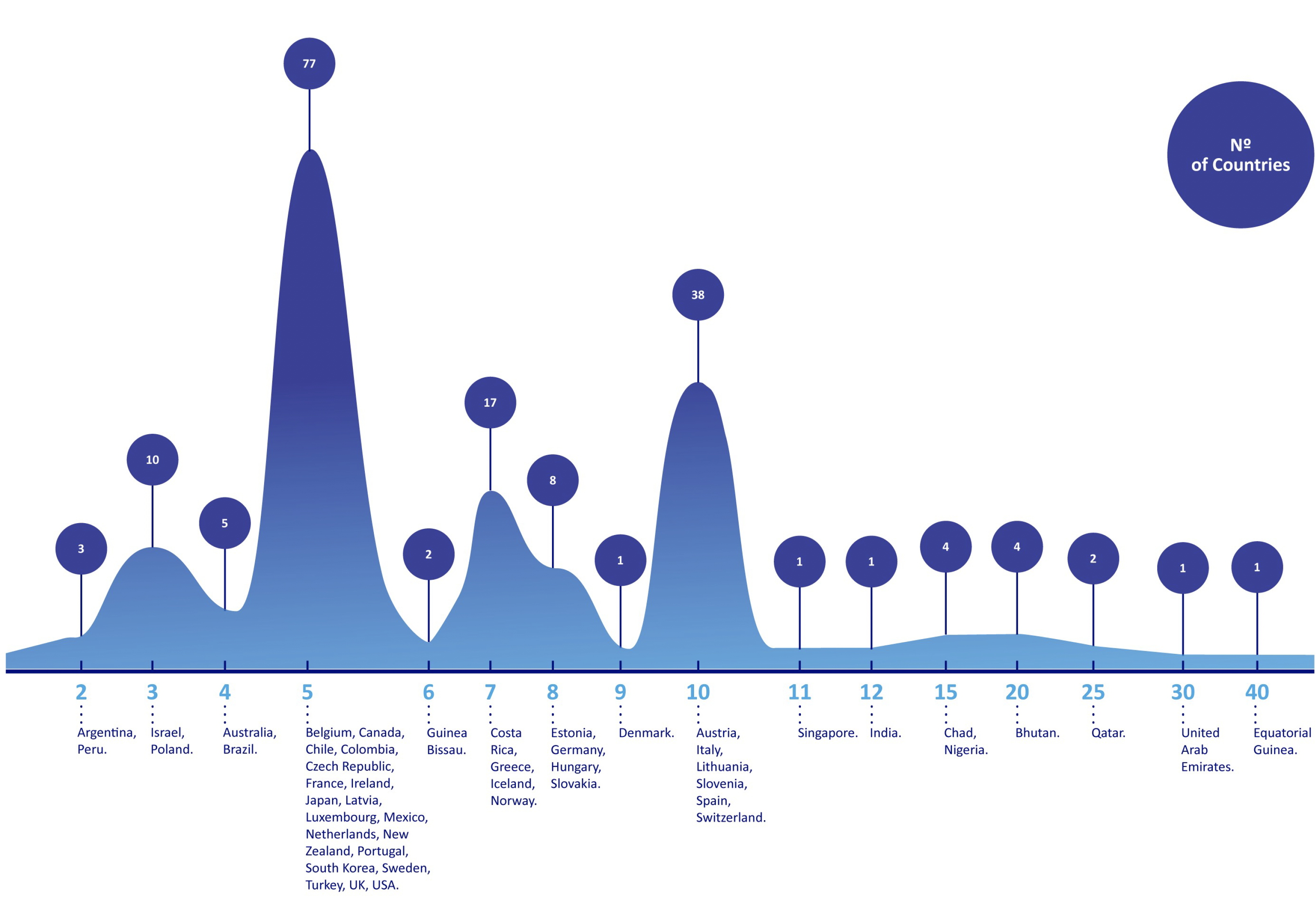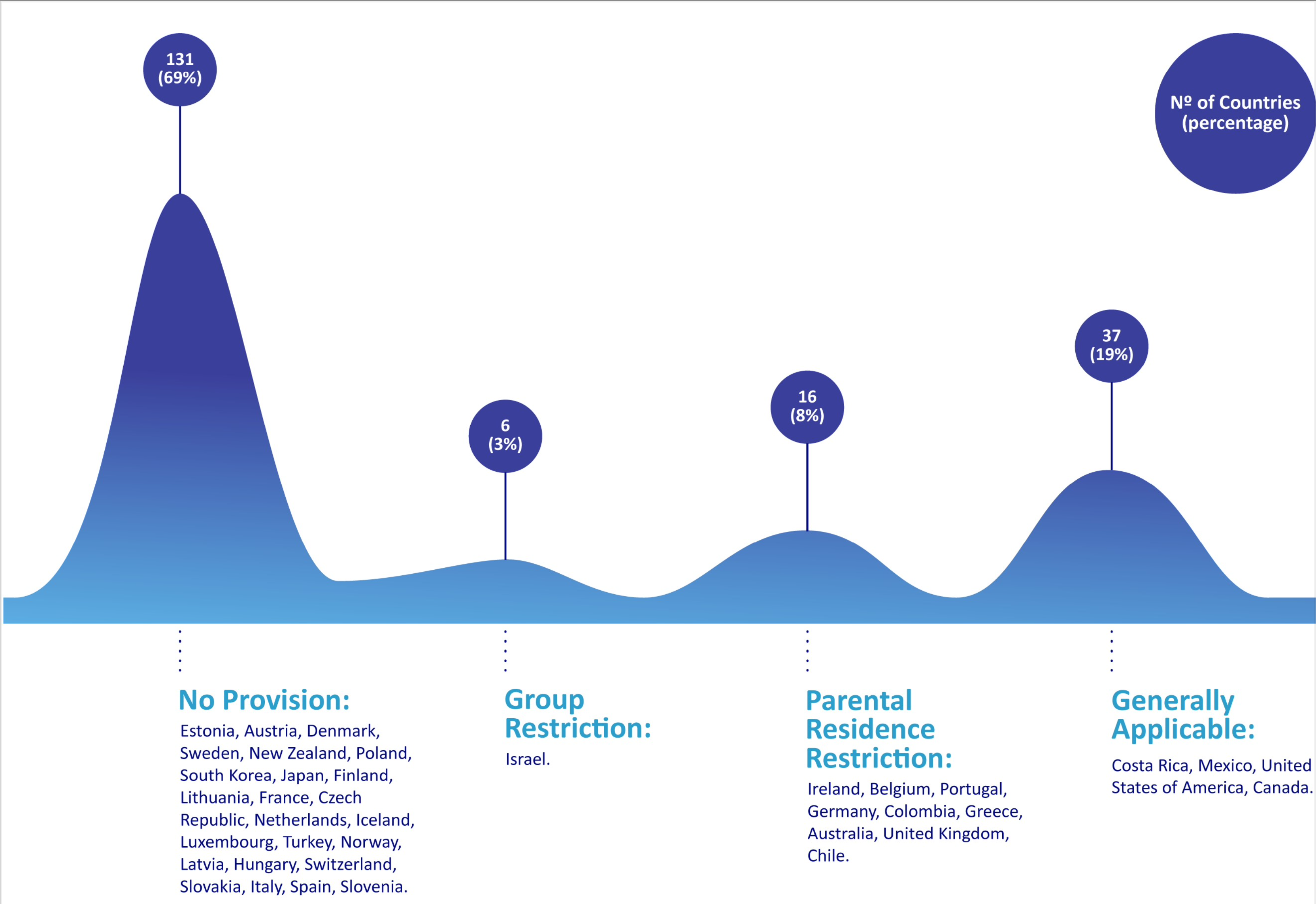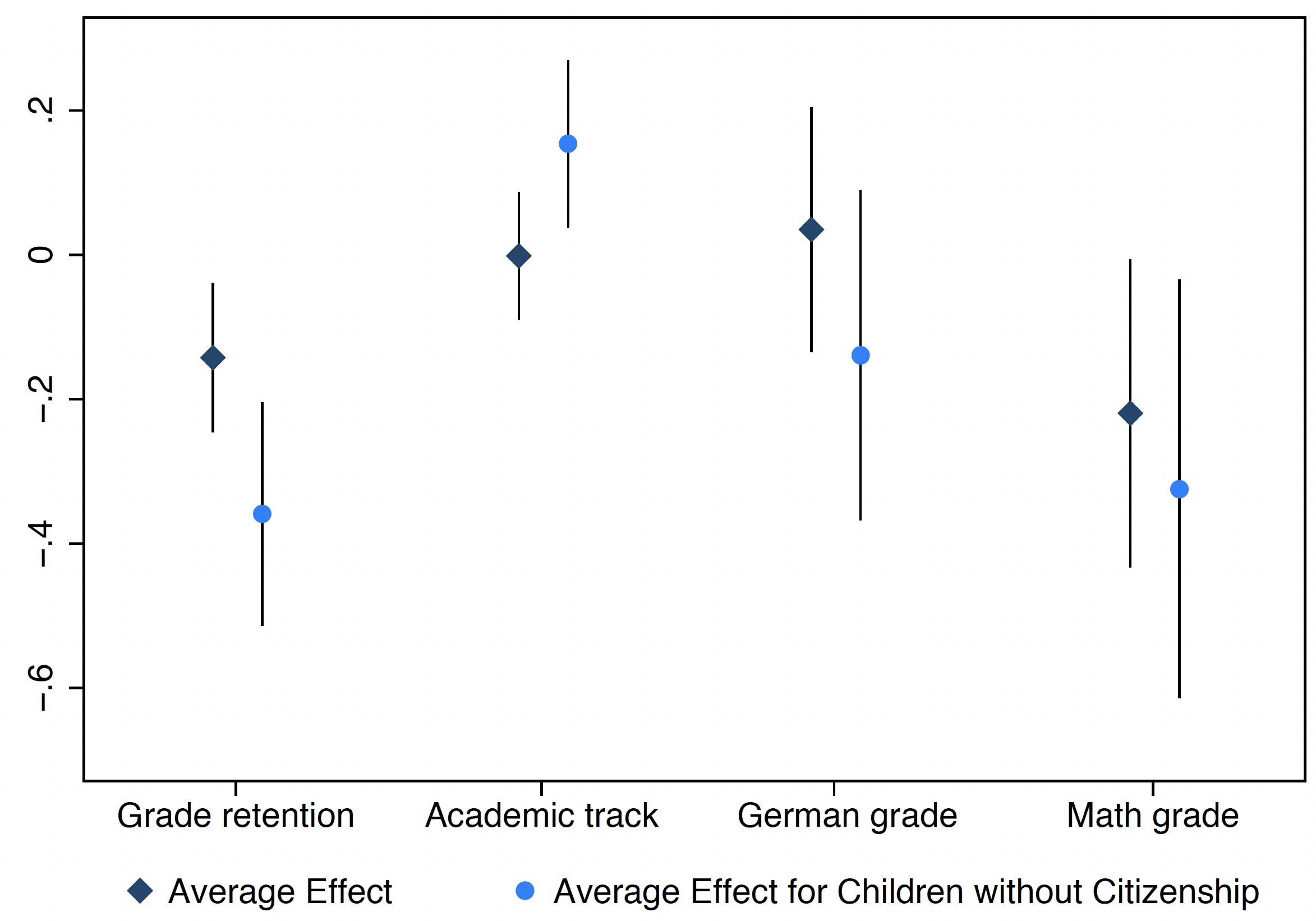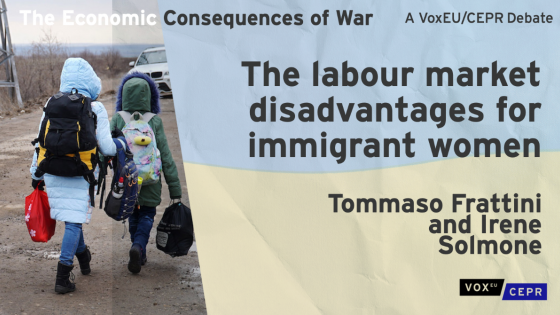Citizenship is the most important privilege a country can bestow on its immigrant population. Becoming a citizen and hence, a full member of society has obvious benefits in terms of political rights and participation. But do these benefits also reach beyond the political realm?
Whether citizenship improves the integration of immigrants and, if so, which immigrants benefit the most is of high social, economic, and political importance. Migrant populations have grown rapidly in many industrialised countries, in particular among children and youth. The share of students with a migrant background has reached close to 50% in Australia, 40% in Canada and almost 30% in France, Germany, the UK and the US (OECD 2018).
This growth in the immigrant population is likely to continue in the face of demographic ageing and scarce labour in destination countries, coupled with population growth and adverse conditions in many countries of origin.
Integrating immigrants economically and socially and providing them with the opportunities the destination countries offer is crucial for immigrants and the receiving countries alike. And yet, employment among immigrant women remains low (Frattini and Solmone 2022) and immigrants still have lower income and wealth compared to natives (Dossche et al. 2022), for example.
A lack of integration translates into a lower overall social and economic position for immigrant families and their descendants – thus cementing unequal opportunities and reducing inter-generational mobility. A lack of integration also reduces the benefits of immigration and could generate social tensions in destination countries.
Citizenship can foster integration by improving the economic position of adult immigrants in the labour market (Chiswick 1978, Bratsberg et al. 2002, Gathmann and Keller 2018, Hainmueller et al. 2019). It not only allows better access to restricted professions but also unlocks career and geographic mobility, so workers could find the best job match. Furthermore, a stronger commitment to remain in the destination country raises the incentives for employers and employees to invest in training and other relevant labour-market skills, like language. Citizenship acquisition – making immigrants full members of society with all rights and responsibilities – could shift the values and role models that immigrants follow (Hainmueller et al. 2017). All these factors could then encourage parents and children to invest more in education, for instance (Avitabile et al. 2014, Felfe et al. 2020).
Immigrant children might obtain citizenship through two channels. The first is through naturalisation. Immigrant children can apply for citizenship once they reach a certain age or can be included in their parents’ application if they are below a certain age. Almost all countries allow naturalisation; yet, Figure 1(a) shows that countries differ widely in their residency requirements, i.e. the number of years an immigrant has to reside legally in the country before becoming eligible for naturalisation.
A second channel to citizenship is through birth-right, i.e. if the immigrant child is born in the destination country to foreign-born parents who are not naturalised. Figure 1(b) shows that birth-right citizenship is globally much less common and is mostly available in North and South America.
Figure 1 Citizenship policies across the world
(a) Residency requirements for naturalisation
(b) Availability of birth-right citizenship
Source: GLOBALCIT (van der Baaren and Vink 2021); Gathmann and Garbers (2022).
Germany provides an ideal case study for analysing the influence of citizenship policies on integration. Traditionally, the country had a very restrictive definition of citizenship based on ancestry (jus sanguinis). Over the past decades, Germany has turned into one of the most popular destination countries for immigrants (Gathmann and Monscheuer 2022). Faced with this new reality, the government completely overhauled the country’s citizenship policies.
A national reform in 1991 defined for the first time eligibility criteria for naturalisation. A peculiarity of the reform was that the residency requirements differed across immigrants depending on their age of arrival. Some immigrants had to reside 8 years in the country, while others had to wait up to 16 years. The second major reform in 2000 introduced birth-right citizenship for immigrant children who were born in the country and whose foreign-born parents had lived in the country for at least eight years. The reform also harmonised the residency requirement for naturalisation to eight years.
Having easier access to citizenship – through shorter residency requirements or having access to birth-right citizenship – increases the share of immigrants who obtain a passport of the destination country. Facing shorter residency requirements (e.g. eight instead of 15 years) substantially increases the take-up rate of citizenship (by 9 percentage points) among adult immigrants, for instance (Gathmann and Keller 2018). Reducing the barriers to citizenship is thus one important tool to increase the take-up rate of citizenship in Germany which, at 40%, is low by international comparison.
We then compare the school performance of immigrant children who obtained birth-right citizenship to that of immigrant children who were not eligible for birth-right citizenship; as well as the school performance of immigrant children who had to wait only eight years before they or their parents could be naturalised to that of immigrant children who had to wait longer until they became eligible.
The comparison controls for other influencing factors like year and age of arrival, year in the country or region of origin, child age, or country of birth. Moreover, our empirical method also tracks which immigrant children benefit the most from having the passport of the host country: do children from certain origin countries benefit more than others? Are children whose families are more reluctant to apply for naturalisation because of strong ties to their country of origin, for instance, more likely to benefit from citizenship?
Figure 2 shows that citizenship has a sizeable impact on the school performance of immigrant children. On average, grade repetition goes down by 14 percentage points. In addition, maths grades improve by 12%, which closes most of the immigrant-native gap. Finally, we also see an increase of 15 percentage points in the share of immigrant children attending the academic track in high school. The estimated effect is larger in magnitude for those children who had not (yet) acquired German citizenship, indicating that educational integration of immigrant children could be further improved by facilitating access to citizenship.
Figure 2 Effects of citizenship on educational outcomes
Notes: The figure shows the effects of citizenship acquisition on educational outcomes. Grade retention and academic track are binary indicators (equal to one if a person attends the high-school track and zero otherwise, for instance); German and math grades are measured on a scale from 1 (very good) to 6 (failed). Average effects are displayed for the full sample, and for the sub-sample of children who have no German citizenship when the outcome is measured.
Source: Gathmann et al. 2021.
One mechanism behind these sizeable effects is that citizenship encourages additional parental investments in their children (Avitabile et al. 2014) and raises attendance rates in early childhood education (Felfe et al. 2020). While most native children between the ages of three and six attend the three-year daycare (Kindergarten) in Germany, the attendance rate of immigrant children in the same age range is substantially lower (Cornelissen et al. 2018, Vonnahme 2021).
Children of Turkish descent, traditionally the largest immigrant group, have higher benefits but are less likely to obtain host-country citizenship. In general, many immigrant children would benefit from citizenship though the families do not apply for it or do not yet fulfil the requirements.
Finally, we ask which citizenship policy is responsible for the improvements in children’s school performance. Is it birth-right citizenship because immigrant children born in the country obtain it automatically if the parents satisfy the 8-year residency requirement? Or, is it a liberal naturalisation policy, which attracts the most motivated immigrants to apply for a German passport?
Lifting the eligibility criteria for both citizenship policies would increase take-up and reduce grade retention. We simulate a reform in which Germany adopts US citizenship laws, where immigrants only face a five-year residency requirement and birth-right citizenship is independent of a parental residency requirement. Liberalising birth-right citizenship brings larger improvements in school performance than facilitating naturalisation. One reason is that birth-right citizenship gives immigrant children whose parents are hesitant or against naturalisation all the rights and opportunities of citizenship – and might thus raise the efforts of children to perform well in school, even if their parents do not obtain a German passport.
References
Avitabile, C, I Clots-Figueras, and P Masella (2014), “Citizenship, fertility, and parental investments”, American Economic Journal: Applied Economics 6(4): 35–65.
Blossfeld, H-P, H-G Roßbach, and J E von Maurice (2011), “Education as a lifelong process. The German National Educational Panel Study (NEPS)”, Zeitschrift für Erziehungswissenschaft, Special Issue 14(Suppl 2).
Cornelissen, T, C Dustmann, A Raute, and U Schönberg (2018), “Who benefits from universal child care? Estimating marginal returns to early child care attendance”, Journal of Political Economy 126(6): 2356–409.
Dossche, M, A Kolndrekaj, M Probst, J Ramos Perez, and J Clacalek (2022), “Immigrants and the distribution of income and wealth in the euro area”, VoxEU.org, 15 October.
Felfe, C, H Rainer, and J Saurer (2020), “Why birthright citizenship matters for immigrant children: Impacts on parental educational choices”, Journal of Labor Economics 38(1): 143–82.
Gathmann, C, and J Garbers (2022), “Citizenship and integration”, working paper, Luxembourg Institute of Socio-Economic Research.
Gathmann, C, and N Keller (2018), “Access to citizenship and the economic assimilation of immigrants”, Economic Journal 128(616): 3141–81.
Gathmann, C, and O Monscheuer (2022), “Labor market assimilation of immigrants in Germany”, working paper, Luxembourg Institute of Socio-Economic Research.
Gathmann, C, C Vonnahme, J Kim, and A Busse (2021), “Marginal returns to citizenship and educational performance”, CEPR Discussion Paper 16636.
Frattini, T, and I Solmone (2022), “The labour market disadvantages for immigrant women”, VoxEU.org, 30 March.
Hainmueller, J, D Hangartner, and G Pietrantuono (2017), “Catalyst or crown: Does naturalization promote the long-term social integration of immigrants?”, American Political Science Review 111(2): 256–76.
Hainmueller, J, D Hangartner, and D Ward (2019), “The effect of citizenship on the long-term earnings of marginalized immigrants: Quasi-experimental evidence from Switzerland”, Science Advances 5(12): eaay1610.
OECD (2018), International migration outlook 2018, Paris: OECD.
van der Baaren, L, and M Vink (2021), “Modes of acquisition and loss of citizenship around the world: Comparative typology and main patterns in 2020”, technical report, European University Institute.
Vonnahme, C (2021), “Do migrant-native achievement gaps narrow? Evidence over the school career”, Ruhr Economic Paper 932, RWI.






